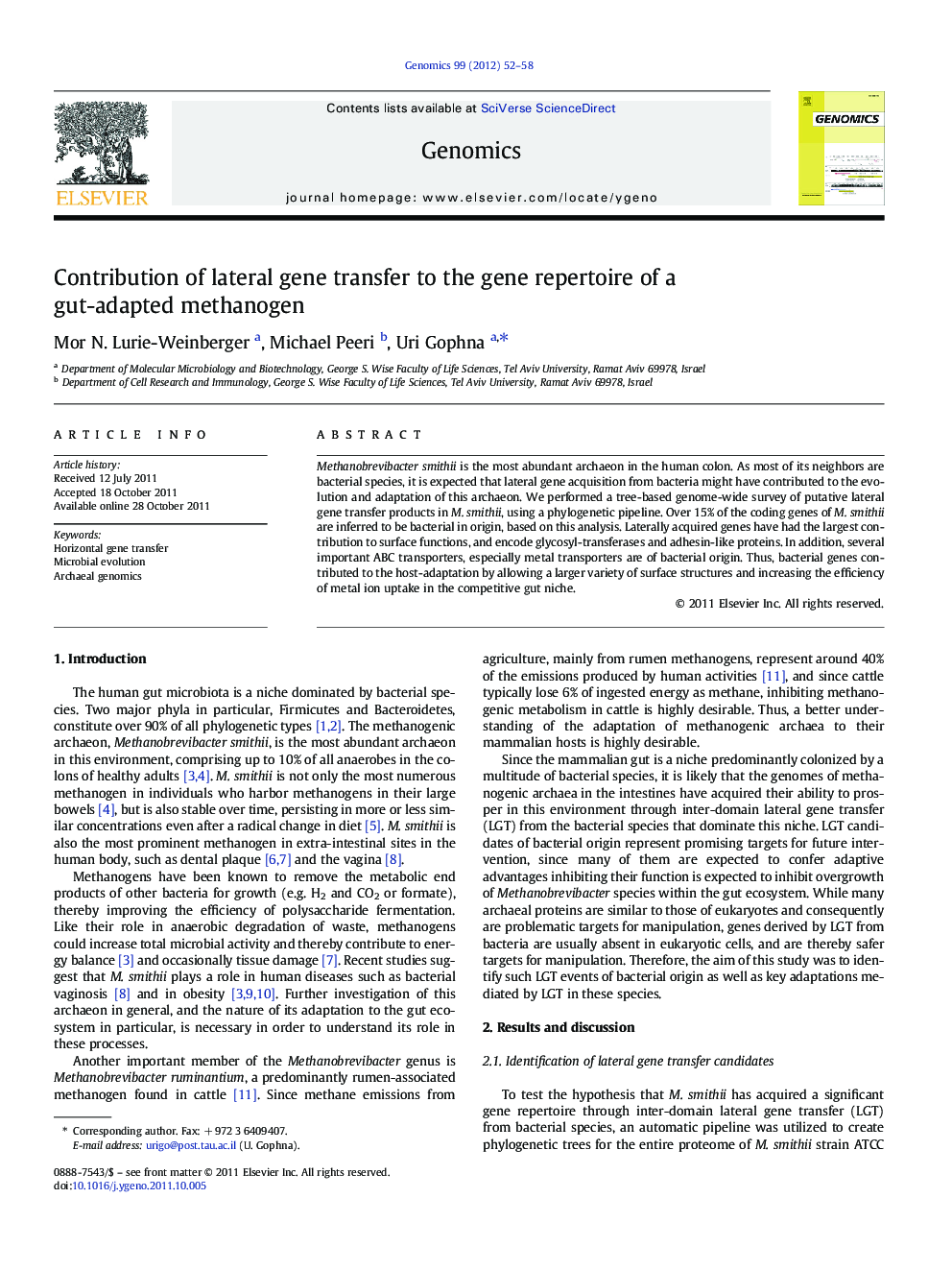| Article ID | Journal | Published Year | Pages | File Type |
|---|---|---|---|---|
| 2820937 | Genomics | 2012 | 7 Pages |
Methanobrevibacter smithii is the most abundant archaeon in the human colon. As most of its neighbors are bacterial species, it is expected that lateral gene acquisition from bacteria might have contributed to the evolution and adaptation of this archaeon. We performed a tree-based genome-wide survey of putative lateral gene transfer products in M. smithii, using a phylogenetic pipeline. Over 15% of the coding genes of M. smithii are inferred to be bacterial in origin, based on this analysis. Laterally acquired genes have had the largest contribution to surface functions, and encode glycosyl-transferases and adhesin-like proteins. In addition, several important ABC transporters, especially metal transporters are of bacterial origin. Thus, bacterial genes contributed to the host-adaptation by allowing a larger variety of surface structures and increasing the efficiency of metal ion uptake in the competitive gut niche.
► Methanobrevibacter smithii is the most abundant archaeon in the human colon. ► A genome-wide survey of putative lateral gene transfer (LGT) in M. smithii was performed. ► Over 15% of the coding genes of M. smithii are inferred to be bacterial in origin. ► The largest bacterial contribution is to surface functions and transporters. ► LGT helped host-adaptation, providing more surface variability and better ion uptake in the competitive gut niche.
